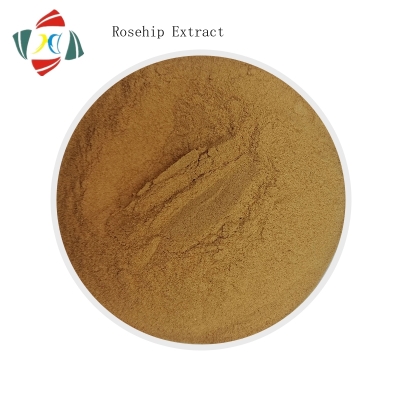Plant Cell. A new mechanism for the control of immunity in plant pores.
-
Last Update: 2020-07-21
-
Source: Internet
-
Author: User
Search more information of high quality chemicals, good prices and reliable suppliers, visit
www.echemi.com
Plant innate immune system can sense microbial associated molecular patterns (MAMP) through pattern recognition receptors (PRRS) located on the cell surface, and then activate the plant's own pattern triggered immunity (PTI) response.this process is characterized by calcium influx into cytoplasm and nucleus, ROS production and mitogen activated protein kinase (MAPK) - mediated signal transduction, thus activating downstream transcriptional reprogramming and hormone response.previous studies in Arabidopsis have identified several PRRS (including flagellin sensing2, fls2, which recognize the flagellin of bacterial MAMP), and PRR will form complexes with receptor like kinases (RLKs), membrane-bound kinases and phosphatases to play immune regulatory functions [2].stomata are openings in the epidermis of plant leaves, which are composed of a pair of guard cells.as a natural opening on plant surface, stomata are not only gas and water exchange channels, but also many pathogen invasion channels.plants can actively close their stomata to prevent the invasion of pathogens. This disease resistance process is called stomatal immunity.it is worth noting that PRR mediated signal transduction can play a role in stomatal immunity, which is an important part of PTI reaction.stomatal closure is closely related to ABA signaling. ABA can induce intracellular signal transduction cascade and act on ion channels (such as anion channel slow ion Channel1, slac1) that cause osmotic pressure changes in guard cells, thus mediating stomatal closure [3].in addition, studies have shown that flg22 induced stomatal closure requires the combined action of slac1, ghr1 (guard cell hydrogen peroxide-restant 1) and OST1 (open stomata 1).ghr1 can mediate drought stress and other signal-mediated stomatal closure by activating slac1, while RLKs directly participate in Aba mediated guard cell signal transduction through interaction with OST1 [4].recently, the plant cell published a research paper entitled stress induced factor 2 regulations Arabidopsis statistical immunity through phosphorylation of the ion channel slac1, which reported the molecular mechanism of stress induced factor (SIF) regulating stomatal immunity in Arabidopsis thaliana.a mutant strain sif2 (stress induced FACTOR2) containing malectin domain (similar to PTI induced oomycete susceptibility1 (ios1)) was identified by reverse genetics. The mutant had dysstomatal closure and decreased immune capacity during bacterial infection [5].this indicates that sif2 is necessary for stomatal movement in Arabidopsis thaliana, and it positively regulates the stomatal immunity induced by flg22.on this basis, this study further analyzed the mechanism of sif2 regulating stomatal closure.this study found that sif2 is necessary for ABA mediated stomatal closure, and the aspartic acid residue of RD motif (D683) of sif2 is necessary to activate stomatal immunity and resist bacterial infection.it was found that sif2 could interact with PRR fls2 / BAK1 and anion channel slac1.sif2 kinase activity is necessary for the dephosphorylation of slac1 N-terminal domain, which indicates that there is a functional relationship between sif2 and slac1.further studies showed that sif2 was necessary for ABA mediated S-type anion channel activity.this study also identified the Ser / Thr site on slac1, which is essential for sif2 mediated phosphorylation, stomatal closure and slac1 activation.a model for the role of sif2 in innate immunity. In conclusion, sif2 participates in ABA and flg22 mediated stomatal closure through interaction and phosphorylation with the anion channel slac1 of guard cells, thus playing a key role in stomatal immunity of plants to bacteria. [1] Huang, P. - Y., y eh, Y. - H., Liu, A. - C., Cheng, C. - P., and Zimmerli, L. (2014), the Arabidopsis lecrk-vi.2 associates with the pattern recognition receptor fls2 and primes Nicotiana benthamiana pattern triggered immunity, plant J. 79, 243-255. [2] Gomez Gomez, L., L., and Boller, L., and Boller, L., and Boller, L., and Boller, L., L., and Boller, J. 79, 243-255. [2] Gomez Gomez, L., L., and Boller, L., and Boller, L., L., and Boller,it's a good idea, T. (2000). FLS2: An LRR receptor-like kinase involved in the perception of the bacterial elicitor flagellin in Arabidopsis. Mol. Cell 5, 1003-1011.【3】Munemasa, S., Hauser, F., Park, J., Waadt, R., Brandt, B., and Schroeder, J.I. (2015). Mechanisms of abscisic acid-mediated control of stomata! aperture. Curr. Opin. Plant Biol. 28,154-162.【4】Montillet, J.-L., Leonhardt, N., Mondy, S., Tranchimand, S., Rumeau, D., Boudsocq, M., Garcia, A.V ., Douki, T., Bigeard, J., Laurière, C., Chevalier, A., Castresana, C., and Hirt, H. (2013). An abscisic acid-independent oxylipin pathway controlsstomatal closure and immune defense in Arabidopsis. PLoS Biol. 11, e1001513【5】YUan, N., yuan, S., Li, Z., Zhou, M., Wu, P., Hu, Q., Mendu, v., Wang, L., and Luo, H. (2018). Stress induced factor 2, a leucine rich repeat kinase regulates basic plant pathway defense. Plant physiology 176, 3062
This article is an English version of an article which is originally in the Chinese language on echemi.com and is provided for information purposes only.
This website makes no representation or warranty of any kind, either expressed or implied, as to the accuracy, completeness ownership or reliability of
the article or any translations thereof. If you have any concerns or complaints relating to the article, please send an email, providing a detailed
description of the concern or complaint, to
service@echemi.com. A staff member will contact you within 5 working days. Once verified, infringing content
will be removed immediately.







